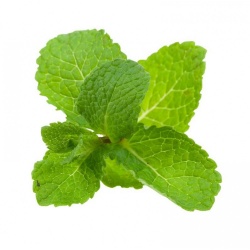Spearmint
Other Names: Curled Mint, Fish Mint, Garden Mint, Green Mint, Hierbabuena, Huile Essentielle de Menthe Verte, Lamb Mint, Mackerel Mint, Menta Verde, Mentha cordifolia, Mentha crispa, Mentha spicata, Mentha viridis, Menthe Verte, Menthe Crépue, Menthe Douce, Menthe à Épis, Menthe Frisée, Menthe des Jardins, Menthe Romaine, Our Lady's Mint, Pahari Pudina, Putiha, Pudinah, Sage of Bethlehem, Spearmint Essential Oil, Spire Mint, Yerba Buena, Yerbabuena.
Spearmint is an herb. The leaves and oil are used to make medicine.
Special Precautions of Spearmint
- Spearmint appears to be safe in healthy individuals when consumed in amounts normally found in food or beverages. Based on available research, it appears that spearmint is well tolerated in recommended doses up to 500 milligrams daily or taken as a tea twice daily for 30 days. In rare cases, spearmint may cause an allergic response.
- Spearmint may cause kidney damage. Use cautiously in individuals with kidney disorders or in those taking drugs that may damage the kidneys.
- Spearmint may cause liver damage. Use cautiously in individuals with liver problems or in those who are using drugs that may damage the liver.
- Use cautiously in individuals taking iron, as spearmint may inhibit iron absorption.
- Use cautiously in individuals with gastrointestinal reflux disease as spearmint may increase the risk of heartburn and regurgitation, although no effect on lower esophageal sphincter function and acid reflux in healthy humans.
- Use cautiously in individuals taking CNS depressants, as spearmint may have sedative and antidepressant effects.
- The BreastCancer.org website includes spearmint among its list of estrogen-containing herbs. Individuals suffering from hormone imbalance, estrogen dominance, breast or other cancers should avoid taking spearmint without a doctor’s approval.
- Use cautiously in individuals trying to conceive, as spearmint tea may lower testosterone levels, cause damaging effects on testicular tissue, decrease sperm density, and significantly decrease follicle-stimulating hormone (FSH) and luteinizing hormone LH) levels. Use cautiously in individuals using hormonal agents.
- Other reported adverse effects include chest pain and decreased libido.
- Avoid in individuals with known allergy/hypersensitivity to spearmint or other members of the Lamiaceae (Labiatae) family, such as basil, mint, rosemary, sage, savory, marjoram, oregano, thyme, lavender, and perilla.
- Spearmint Essential Oil is a potential mucous membrane irritant.
- There is a low risk of skin sensitization and recommend a dermal maximum of 1.7%.
Benefits and uses of Spearmint are
In folk medicine, spearmint has been used for gastrointestinal distress, respiratory problems, stomachache, dandruff, bad breath, and chronic bronchitis. It has also been used as a sedative, abortifacient, and menstruation stimulant (emmenagogue).
- Gas (flatulence).
- Indigestion.
- Nausea.
- Sore throat.
- Diarrhea.
- Colds.
- Headaches.
- Toothaches.
- Cramps.
- Arthritis.
- Muscle pain.
- Skin conditions.
- Some human research suggests that drinking spearmint tea may help reduce excessive hair growth (called hirsutism) in women with polycystic ovarian syndrome (PCOS). According to a study published in a 2010 issue of “Phytotherapy Research,” spearmint tea may have a significant anti-androgen effect on individuals suffering from polycystic ovarian syndrome. One of the side effects of this condition is hirsutism, a cosmetic and psychological problem caused by increased levels of androgen and other male sex hormones in women.
- Early evidence suggests that an herbal combination product containing spearmint may help treat irritable bowel syndrome.
- It is unclear if chewing spearmint-flavored gum improves memory; evidence is mixed.
- Aromatherapy for Pitta Imbalance.
Reference
- B.M. Lawrence, Essential Oils 1988-1991 (Wheaton: Allured Publishing, 1995), 20. Source cited in Robert Tisserand and Rodney Young, Essential Oil Safety (Second Edition. United Kingdom: Churchill Livingstone Elsevier, 2014), 427.
